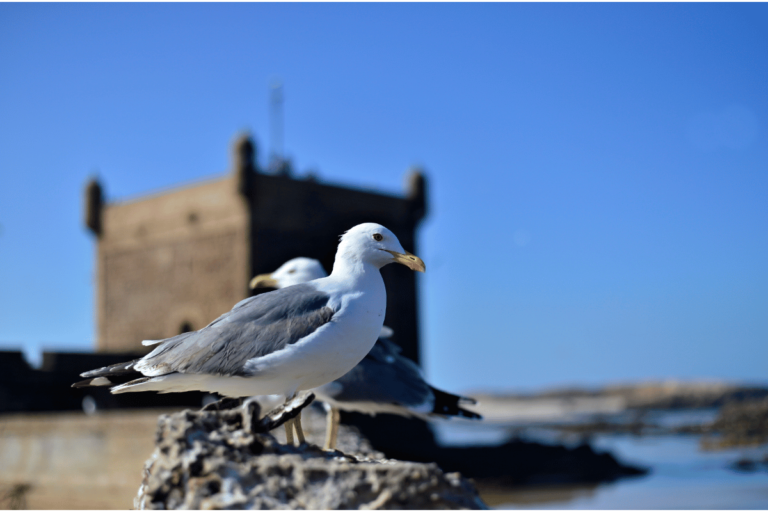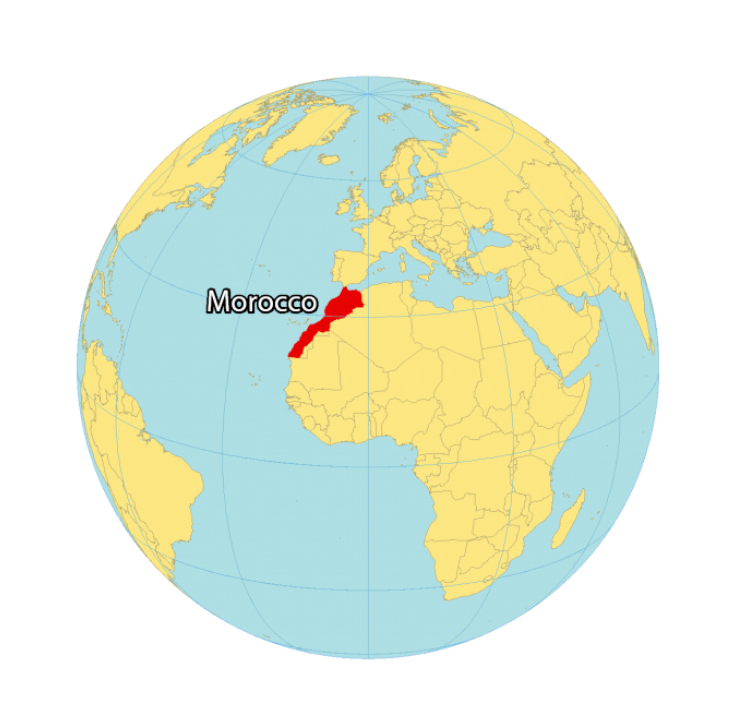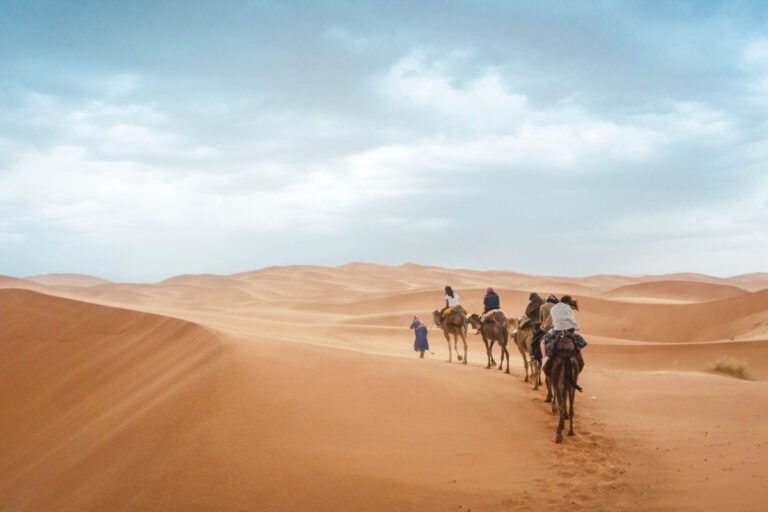Are you ready to embark on a journey through time and discover the rich Roman heritage of Morocco?
From the ancient city of Volubilis to the bustling medina of Fes, this article will take you on an adventure filled with fascinating ruins, artifacts, and historical sites.
Get ready to immerse yourself in the history and culture of Morocco as we delve into its Roman past.
As you explore the ancient city of Volubilis, be prepared to be amazed by the well-preserved ruins that offer a glimpse into Morocco’s Roman history. Walk among the grand arches, intricate mosaics, and towering columns that once adorned this bustling city. Marvel at the beautiful House of Orpheus or imagine life in the impressive Basilica built during Emperor Caracalla’s reign. With each step, you can’t help but feel transported back in time as you uncover layers upon layers of history.
Continue your journey in Fes where you’ll have the opportunity to discover Roman artifacts hidden within its vibrant medina. As you wander through winding alleys and bustling markets, keep an eye out for stalls selling antiques and collectibles. You might stumble upon a piece of pottery or a fragment of a statue that tells a story from centuries ago. Take your time exploring these treasures and let your imagination run wild as you piece together their significance in Moroccan history.
Whether it’s wandering through ancient ruins or stumbling upon hidden artifacts, discovering Morocco’s Roman heritage is an adventure that promises both knowledge and awe-inspiring experiences.
So pack your bags and get ready to uncover the secrets left behind by one of history’s greatest civilizations – all within this captivating North African country.
Key Takeaways
- Volubilis is a significant ancient city in Morocco with well-preserved ruins, including grand arches, intricate mosaics, and towering columns.
- The medina of Fes holds hidden Roman artifacts, offering a glimpse into the Roman presence in Morocco.
- The Chellah Roman Site in Rabat showcases hidden artifacts and ruins, including a Roman necropolis with elaborate craftsmanship.
- Tangier is an important destination for exploring Morocco’s Roman heritage, with the Roman necropolis at Cotta providing insight into Roman burial rituals.
Volubilis: Explore the Ancient Roman Ruins
Step back in time and immerse yourself in the awe-inspiring beauty of Volubilis, as you wander through the ancient Roman ruins.
Explore Roman mosaics that depict scenes from daily life and showcase the artistic skills of the time. These intricate artworks provide a glimpse into the culture and customs of the Romans who once inhabited this city.
As you walk among the remnants of grand villas and public buildings, you can’t help but feel a sense of wonder at the engineering prowess that allowed these structures to stand for centuries.
In addition to marveling at the architectural wonders, visiting Volubilis also offers an opportunity to learn about Roman trade routes. Strategically located between the Atlas Mountains and the coastal plains, this city played a crucial role in facilitating trade between Rome and other parts of Africa.
The remains of warehouses and markets give insight into the types of goods that were exchanged, such as olive oil, wine, and precious metals. It’s fascinating to imagine how bustling with activity this place must have been during its heyday.
As you continue your exploration of Volubilis, take a moment to appreciate its historical significance. This UNESCO World Heritage Site stands as a testament to Morocco’s rich Roman heritage and its importance in shaping civilizations throughout history.
The meticulous preservation efforts undertaken by archaeologists allow visitors like yourself to step into this ancient world and gain a deeper understanding of Morocco’s past.
Transitioning seamlessly into Fes: Discover Roman artifacts in the medina, you’ll find another treasure trove awaiting your discovery within its historic walls.
Fes: Discover Roman Artifacts in the Medina
Explore the vibrant streets of Fes and unveil hidden treasures from ancient times, where the Medina holds exquisite Roman artifacts waiting to be discovered. As you wander through the narrow alleyways, you’ll come across a plethora of Medinan archaeological sites that showcase the rich Roman heritage of Morocco.
Here are some fascinating highlights:
-
Palais Royale: Step into this majestic palace and marvel at its stunning architecture influenced by both Islamic and Roman styles. Adorned with intricate mosaics and elaborate carvings, it’s a true testament to the blending of cultures in Fes.
-
Dar Batha Museum: This charming museum houses an impressive collection of Roman artifacts found within the Medina. From beautifully crafted pottery to intricately carved statues, each piece tells a story of Morocco’s connection to ancient Rome.
-
Bou Inania Madrasa: This architectural masterpiece not only serves as a religious school but also showcases remarkable Roman-inspired designs. Admire the detailed zellij tilework and ornate stucco decorations that reflect the influence of Roman aesthetics.
-
Al-Qarawiyyin Mosque: Founded in 859 AD, this mosque is one of the oldest universities in the world. Delve into its history and discover how it played a significant role in preserving Roman knowledge through its extensive library.
-
Nejjarine Museum: Located in a beautifully restored fondouk (caravanserai), this museum offers an insightful journey into Moroccan craftsmanship. While exploring exhibits on traditional woodworking techniques, keep an eye out for subtle influences from ancient Rome.
Now, let’s transition to our next destination – Meknes: Visit the impressive Roman gates that stand as symbols of power and grandeur.
Meknes: Visit the Impressive Roman Gates
As you stroll through the ancient streets of Meknes, you’ll be captivated by the sight of the magnificent Roman gates that stand proudly as symbols of power and grandeur.
Meknes, a city in Morocco, is known for its rich history and cultural heritage. It is home to some impressive Roman architecture that showcases the influence of this ancient civilization in Morocco.
The Roman gates in Meknes are a testament to the greatness of the Roman Empire. These monumental structures were built with precision and craftsmanship, showcasing intricate designs and detailed carvings. The Bab Mansour gate is particularly noteworthy, with its imposing size and ornate decorations.
As you stand before these gates, you can’t help but marvel at their architectural beauty and historical significance.
Visiting Meknes offers a unique opportunity to learn about the Roman influence in Morocco. The city’s historical sites provide insights into how Romans left their mark on this land centuries ago. Exploring these ancient ruins allows you to imagine what life was like during that time period and appreciate the impact Romans had on Moroccan culture.
Transitioning into the subsequent section about ‘rabat: explore the chellah roman site’, we continue our journey through Morocco’s Roman heritage. Although Meknes showcases impressive Roman gates, Rabat takes us deeper into this world by offering an exploration of the Chellah Roman site.
Rabat: Explore the Chellah Roman Site
Venture into Rabat to uncover the hidden secrets of the Chellah Roman Site, where history comes alive amidst the ancient ruins.
Explore the Roman influence in modern-day Rabat, Morocco: A journey through history and culture awaits you at this remarkable site. As you wander through the Chellah, you’ll be transported back in time to when Romans ruled this land. The remnants of their civilization are still visible today, offering a glimpse into their architectural prowess and cultural impact.
Within the Chellah site, you’ll discover hidden Roman artifacts and ruins that tell stories of a bygone era. From intricate mosaics that once adorned grand villas to well-preserved statues depicting gods and emperors, each artifact provides valuable insights into Roman life. Take your time to admire these treasures as they offer glimpses into the daily lives and beliefs of those who lived here centuries ago.
As you delve deeper into the Chellah, immerse yourself in its serene ambiance. The ancient walls surrounding the site create an atmosphere of tranquility, perfectly juxtaposed with the bustling city just beyond its boundaries. Stroll along pathways lined with lush greenery and listen to the gentle rustling of leaves as it harmonizes with distant whispers from history’s past.
While exploring this captivating site, don’t miss out on visiting the magnificent Roman necropolis within Chellah. This sacred burial ground is home to tombs adorned with intricate carvings and inscriptions that pay homage to those who have long departed. Marvel at the elaborate craftsmanship displayed on each tombstone as it stands as a testament to a rich funerary tradition practiced by Romans.
With your exploration of Rabat’s fascinating Chellah Roman Site complete, it’s time to move forward in our journey through Morocco’s roman heritage. Transitioning seamlessly into our next stop at Tangier: Uncover the Roman necropolis at Cotta; prepare yourself for another chapter in the story of Morocco’s rich history.
Tangier: Uncover the Roman Necropolis at Cotta
Make your way to Tangier and uncover the hidden secrets of the Roman necropolis at Cotta, where history comes alive amidst the ancient tombs. This archaeological site provides a fascinating glimpse into the past, allowing you to explore and understand the Roman burial rituals that were practiced here centuries ago.
The Roman necropolis at Cotta is an intriguing site that showcases the rich heritage of Morocco. As you walk through this ancient burial ground, you will be surrounded by rows of tombs dating back to the Roman era. The intricate details carved into these tombs depict scenes from everyday life, offering valuable insights into the culture and beliefs of the people who once inhabited this region.
To truly appreciate the significance of this site, take a moment to examine a 2 column and 3 row table provided below:
| Tomb Type | Description |
|---|---|
| Sarcophagus | Elaborate stone coffins used for high-ranking individuals |
| Columbarium | Small niches designed to hold cremation urns |
| Mausoleum | Grand structures built as family tombs, often adorned with intricate carvings and decorations |
By studying these different tomb types, archaeologists have been able to gain a deeper understanding of Roman burial practices in Morocco. The presence of sarcophagi suggests that there was a social hierarchy even in death, with wealthier individuals being buried in more elaborate coffins. Columbaria indicate that cremation was also a common practice among Romans in this region.
Uncovering these archaeological treasures at Cotta allows us to piece together fragments of history and better comprehend the lives led by those who lived during ancient times. By exploring this remarkable necropolis, you will gain an appreciation for both the artistry and customs associated with Roman burial rituals. So make sure to include Tangier on your itinerary when discovering Morocco’s fascinating Roman heritage!
Frequently Asked Questions
Are there any guided tours available to explore the Roman ruins in Volubilis?
Yes, guided tours are available to explore the Roman ruins in Volubilis. These tours provide a detailed and factual experience, allowing you to delve into the rich history of the ancient city while enjoying expert guidance and analysis.
Can visitors touch and interact with the Roman artifacts in the Medina of Fes?
While visiting the medina of Fes, you won’t be able to touch or interact with the Roman artifacts. Preservation efforts are in place to protect these valuable historical treasures and ensure their long-term existence.
What is the significance of the Roman Gates in Meknes?
The significance of the Roman gates in Meknes lies in their preservation. These ancient structures serve as a testament to the city’s rich history and cultural heritage, allowing visitors to witness firsthand the architectural marvels of the Roman era.
Is there an entrance fee to visit the Chellah Roman Site in Rabat?
Yes, there is an entrance fee to visit the Chellah Roman site in Rabat. However, the accessibility of Roman ruins in Volubilis for guided tours makes it a worthwhile experience for history enthusiasts.
How long does it take to explore the Roman Necropolis at Cotta in Tangier?
To fully explore the Roman necropolis at Cotta in Tangier, it typically takes around 1-2 hours. This is a significant part of the Roman heritage in Tangier and provides an insightful glimpse into ancient burial practices.
Conclusion
In conclusion, you’ve embarked on a remarkable journey to discover the Roman heritage of Morocco. From the ancient ruins of Volubilis to the hidden artifacts in Fes, you’ve delved deep into the historical tapestry of this captivating country.
With each step through the impressive gates of Meknes and the exploration of the Chellah Roman site in Rabat, you’ve unraveled centuries-old secrets. And as you uncover the Roman necropolis at Cotta in Tangier, you can’t help but be awestruck by the grandeur and significance of these ancient sites.
Throughout your adventure, you’ve been immersed in a world where time stands still, and where every stone tells a story. The alliteration adds an enchanting rhythm to your journey as you wander through these timeless remnants of a bygone era.
Each detailed observation has allowed for a deeper understanding and appreciation of Morocco’s rich history and cultural identity.
So let yourself be transported back in time as you explore these extraordinary sites that bear witness to Morocco’s Roman past. Engage with their intricate architecture, marvel at their well-preserved artifacts, and reflect on how they shaped not only Morocco but also the wider Mediterranean world.
By embracing this unique opportunity to connect with history firsthand, you’ve gained invaluable insights into Morocco’s enduring legacy as a crossroads between civilizations.

The Editorial Team is a passionate group of Morocco enthusiasts dedicated to sharing the beauty, culture, and wonders of this captivating country. With diverse backgrounds and a deep love for travel, we strive to bring you engaging and informative content that inspires your Moroccan adventures. From uncovering hidden gems and sharing local insights to exploring mouthwatering cuisine and showcasing the vibrant lifestyle, our team is committed to providing you with valuable resources and exciting stories that enhance your exploration of Morocco. Join us on this journey as we celebrate the rich heritage and unforgettable experiences that make Morocco truly special.





